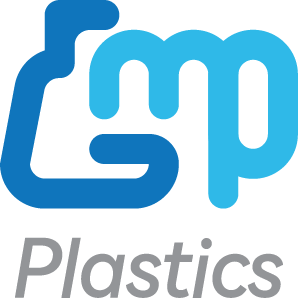Hey there, science enthusiasts! Have you ever found yourself in a lab, staring at a polypropylene (PP) round storage bottle, wondering, “Can I autoclave this bad boy, or will it turn into a molten mess?” Well, buckle up, because we’re about to dive into the wonderful world of plastics, heat, and high-pressure sterilization!
First, What Even IS an Autoclave?
An autoclave is like a super-powered pressure cooker for science! It uses high heat (typically 121°C or 250°F) and steam under pressure to sterilize labware, media, and even biohazardous waste. But here’s the catch: not all materials can handle that intense heat and pressure. Some warp, some melt, and some might even leach nasty chemicals. So, what about polypropylene round storage bottles?
Meet Polypropylene: The Heat-Resistant Plastic Hero!
Polypropylene (PP) is one of the most commonly used plastics in lab settings, and for good reason:
✅ High Heat Resistance – It doesn’t start softening until around 130-170°C (266-338°F). That means it can handle an autoclave cycle without turning into goo!
✅ Chemical Resistance – PP resists most acids, bases, and solvents, so you don’t have to worry about it breaking down under typical lab conditions.
✅ Lightweight & Durable – Unlike glass, it won’t shatter if you drop it. That’s a big plus in a busy lab!
✅ Non-Toxic & Reusable – Many PP labware items are BPA-free, meaning they’re safe for biological and chemical applications.
But before you go throwing all your polypropylene bottles into the autoclave, let’s talk design, thickness, and potential risks.
Not All PP Round Bottles Are Created Equal
Here’s the deal: while polypropylene itself is autoclavable, not every PP storage bottle is built to survive repeated autoclaving. Here’s why:
-
Wall Thickness Matters – Some PP bottles, especially thin-walled ones, may warp or lose structural integrity over multiple autoclave cycles. A thicker bottle is more likely to withstand the heat and pressure.
-
Cap Compatibility – The bottle may be PP, but is the cap also autoclavable? Many storage bottles come with polyethylene (PE) caps, which are NOT autoclavable (they’ll deform at much lower temperatures). If you need to autoclave the whole setup, make sure the cap is also polypropylene or another high-temp material.
-
Repeated Autoclaving = Potential Weakness – Even though PP can handle the heat, repeated autoclaving can cause micro-cracks or material fatigue over time, especially if the bottle is exposed to harsh chemicals between cycles.
How to Autoclave a Polypropylene Round Storage Bottle Properly
So, you’ve confirmed your bottle is made of PP, and you’re ready to give it a steamy bath. Here’s how to do it without ruining your labware:
Step 1: Check the Label
Most laboratory-grade polypropylene bottles will have an autoclave-safe symbol (it often looks like a little box with steam waves). If your bottle doesn’t have one, check the manufacturer’s specs!
Step 2: Loosen the Cap
Pressure is the name of the game in autoclaving, but trapping pressure inside a sealed container? Bad idea! Always loosen or remove the cap before autoclaving, or you might end up with an exploded bottle.
Step 3: Use a Sterilization Tray
Place bottles in an autoclave-safe tray with a bit of space between them. This ensures even steam penetration and prevents accidental melting if something goes wrong.
Step 4: Choose the Right Cycle
Set the autoclave to 121°C (250°F) for 15-20 minutes at 15 psi. Some bottles can handle higher temperatures, but this is the standard safe range.
Step 5: Allow Proper Cooling
Don’t be impatient! Let the bottles cool slowly at room temperature before handling. Rapid cooling (like dunking in cold water) can cause stress fractures in the plastic.
When Should You NOT Autoclave a PP Storage Bottle?
Even though polypropylene is generally autoclavable, there are times when it’s best to avoid it:
🚫 If It’s Not Designed for Repeated Use – Single-use bottles may become brittle or deformed after just one autoclave cycle.
🚫 If It’s Already Damaged or Scratched – Small imperfections can turn into big failures under heat and pressure.
🚫 If It Has a Non-Autoclavable Cap – Autoclaving a bottle with a non-PP cap can cause deformation or contamination.
🚫 If It’s Been Exposed to Harsh Chemicals – Some chemicals can alter the plastic structure, making it more prone to degradation when exposed to high heat.
Alternatives: What If You Can’t Autoclave Your PP Bottle?
If you’ve got a polypropylene storage bottle that isn’t autoclavable, don’t worry! Here are some alternative sterilization methods:
🔥 Dry Heat Sterilization (NOT Recommended for PP Bottles) – Polypropylene doesn’t hold up well to dry heat above 160°C (320°F), so this isn’t a great option.
🦠 Chemical Disinfection – Soaking in 70% ethanol, bleach (diluted), or hydrogen peroxide can kill microbes without heat exposure.
💡 Gamma Irradiation – If you’re working in a sterile lab, some plastics can be gamma-sterilized instead of autoclaved. Check with the manufacturer!
Final Verdict: Can You Autoclave Polypropylene Round Storage Bottles?
🥼 Yes! But only if they are labeled as autoclavable, have a thick enough structure, and have compatible caps. Always check the manufacturer’s specifications before assuming your bottle can take the heat.
🔬 Pro Tip: If you autoclave polypropylene bottles regularly, inspect them often for signs of warping, brittleness, or cracks. When in doubt, swap it out!
So there you have it, fellow scientists! The next time someone in the lab asks, “Hey, can I autoclave this polypropylene bottle?”—you can confidently answer with SCIENCE! 🚀




